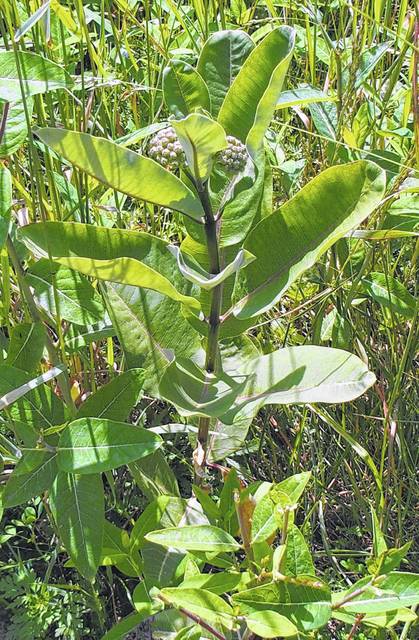
The iconic monarch butterfly, which has long been a welcome sight in backyard gardens across Ohio, faces many threats. In Ohio, one way we can ensure future generations of monarch butterflies continue to visit flower gardens throughout our state is by protecting native milkweed plants.
Every year in the fall, monarch butterflies across the eastern U.S. and Canada begin a 3,000-mile-long journey down to wintering grounds in Mexico. In the spring, these same butterflies head back north, and delight us with their presence once again. However, this amazing journey would not be possible without milkweed, a group of plants critical to the survival of the monarch butterfly. As butterflies, monarchs can feed on the nectar of a number of different flowering plants, but as caterpillars, monarchs are entirely dependent on the availability of milkweed.
Monarch caterpillars hatch from eggs laid on milkweed plants and feed on the leaves of the plant as they grow. If these plants are mowed, removed, or sprayed with pesticides or herbicides, the caterpillars will not survive. Protecting these plants, especially during the egg-laying period from July through September, helps both monarch butterflies and caterpillars continue their life cycle and ultimately results in more monarch butterflies that can complete their journey to Mexico and back.
In the past, milkweed was viewed as a toxic weed. Today, we know that milkweed is a very important group of native plants that helps support many species of wildlife, including monarch butterflies. Learn more about ways you can help ensure these beautiful butterflies are around for generations to come by visiting the Monarch Joint Venture (http://monarchjointventure.org/) or downloading the Ohio Department of Natural Resources publication “Milkweeds & Monarchs” (http://wildlife.ohiodnr.gov/portals/wildlife/pdfs/publications/id%20guides/Milkweeds%26Monarchs.pdf).
Fayette Soil & Water Conservation District will participate in the Ohio Pollinator Habitat Initiative’s collection of Common Milkweed pods again this fall. The plants bloom early to mid-summer, so now is a good time to begin locating plants for potential pod harvest. Common Milkweeds are perennials, so any plants from which pods were harvested last year may be used again this year. More information on this program will be released at a later date.


